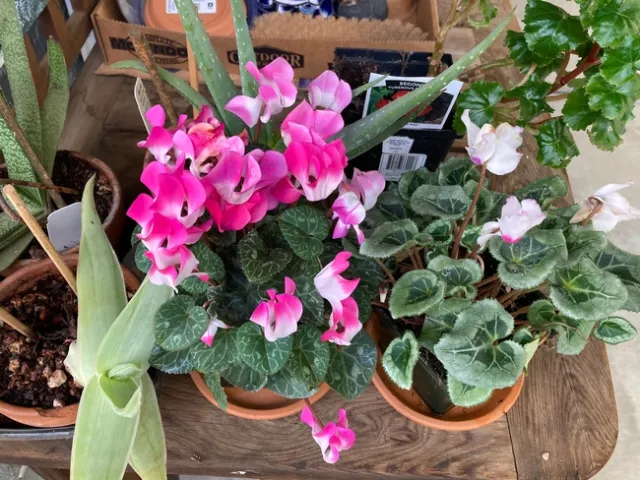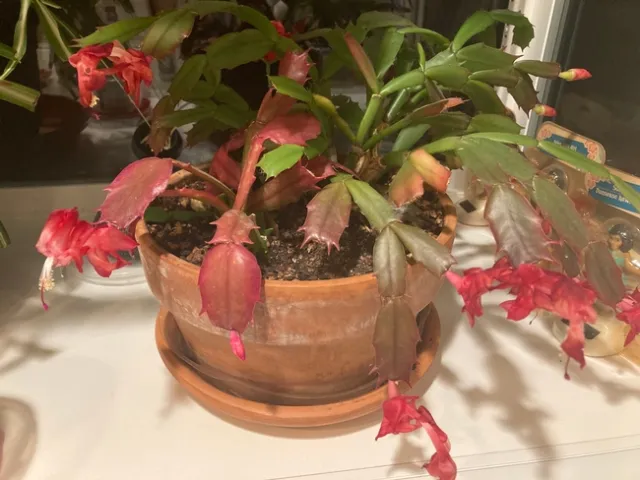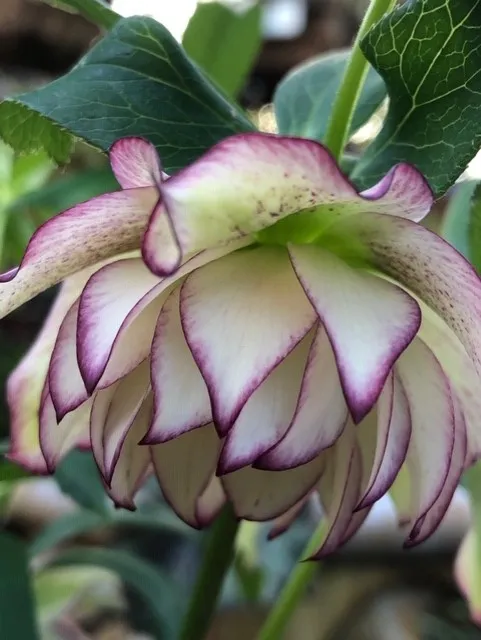
When I was a first-grader in North Carolina, my mom sent me and two of my younger siblings out to look for holly in a wooded area near our home just before Christmas. We thought we knew what we were looking for, but we came back with some other kind of greenery with red berries pilfered from a neighbor's plant that surrounded her curbside mailbox post. The neighbor was not happy with what we had done to her bush. I was thinking of that today when I was wondering what other plants have been used for year-end holidays. I don't remember poinsettias being as popular then as they are now, and I don't recall all their color variations that are commonly seen at the nurseries.
I did a little research to see what other places have used and are still using for live plants/greenery other than poinsettias and the Christmas tree. I was surprised to see that I already have a few of these.
Christmas Cactus is a houseplant that originally came from Brazil and is now common in Africa, Australia, and Latin America. The flowers look like ornaments. What I didn't know about Christmas Cactus is the variety of colors of the flowers. Other than pink and red, they can be white, purple, magenta, yellow, or gold.

Ivy adds holiday greenery to English, Irish, and other European homes recalling the wilderness. It also provides food for insects and berries food for birds. We generally think of it as an invasive plant in this part of the country.
Amaryllis also comes in a variety of colors and typically blooms in winter. My “Christmas Lily” is red and is currently not blooming. My mom was given 3 bulbs packed in red wax last Thanksgiving that bloomed last Christmas – large pink flowers - and are now getting ready to re-bloom, even though they are still in the original red wax packaging and have had no water or nutrition. That's kind of a miracle all on its own! I have also seen white and candy-cane striped varieties. Amaryllis originally came from the Western Cape of South Africa.
European Mistletoe, a parasitic plant, was first used in Druid ceremonies in Europe allegedly for its magical powers. That thought may have come from the fact that it's green and looks healthy when other plants appear dead. The reason it's green is that it's sucking the water, soil minerals, and life out of its host tree. Some mistletoe species are poisonous to eat, but apparently not to birds. When mistletoe was cleared from trees in both New South Wales, Australia, and Central Mexico, bird populations markedly decreased. Mistletoe appears to be a “keystone species – an organism that plays a crucial role in its ecosystem.” (National Geographic.com). Today it is part of the New Year's tradition of kissing under the mistletoe.
Radishes – Wait, radishes??? In Oaxaca, Mexico, Noche de Rabanos (Night of the Radishes) is celebrated on December 23rd. Radishes are originally from Spain. For this celebration, radishes are carved into elaborate figures of the nativity scene.
The Christmas rose, which is not a rose, but hellebore (Helleborus niger) is commonly seen in southeastern Europe. It blooms around the time of the Orthodox Christmas, two weeks after the Western Christmas. Pomegranates are also popular in the Mediterranean and Middle East for Christmas celebrations.

This is just a snapshot of plants cherished for the memories they bring of Christmas and year-end celebrations. There is an abundance of other traditional Christmas plants for countries around the world. Cyclamen, orchids, hydrangeas are just a few examples. For me, though, the memory will always be of the plant we thought was holly.

